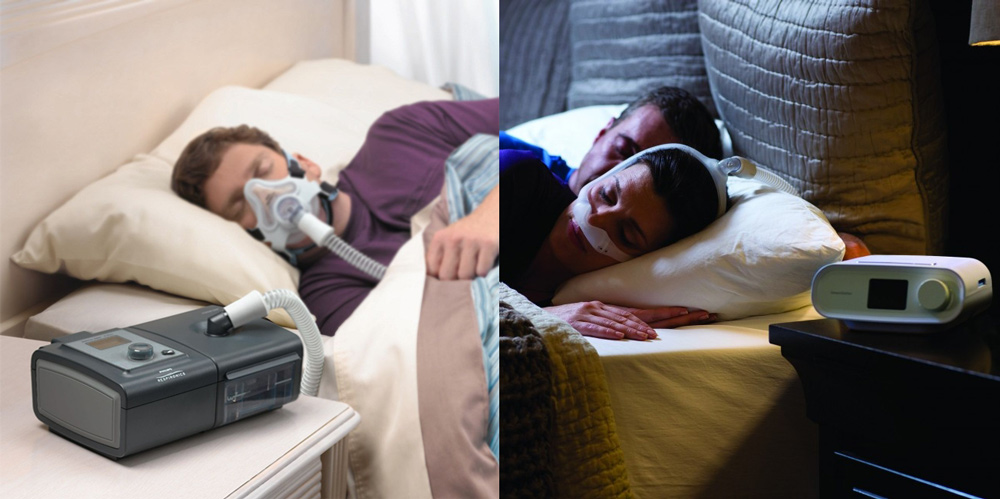Last updated on May 10th, 2021 at 03:59 pm
Choosing a CPAP machine is not as difficult as it may appear. There are individual requirements and features of the various CPAP machines that are required by your specific condition. A sleep-test or sleep-study will tell you where to start and tell you what type of CPAP machine you’ll need. With that in mind, we have written this guide to help you narrow down your choices and give you a greater understanding of precisely what it is you are choosing, and ensure you get the machine that is correct for you.
Fixed-pressure or Automatic (a.k.a. CPAP or APAP)?
There are two types of CPAP machines, fixed pressure ones or automatic ones. A fixed-pressure machine stays at one pressure level all the time. This pressure setting would be provided by your sleep clinic, or possibly your doctor. These are calculated for your requirements based on several factors. If you have been provided with a fixed-pressure setting by your clinic or GP, then a fixed-pressure machine should do nicely.
Automatic CPAP Machine (APAP)
If you do not have a specific pressure setting (most do not), then you will need to opt for an automatic machine instead, often known as APAP (wrongly, see below for a boring explanation). Automatic machines have a range of sensors built-in that allow them to calculate how much pressure you require at any given time. It can detect when you are about to stop breathing and raises the pressure accordingly, and once the danger has passed, it will drop down again.
What this means is that on average, you will get less pressure throughout the night than you would with a fixed pressure machine; which would be set at the higher setting required. Many find the therapy to be more comfortable and more effective as a result.
So in short: If you have not been prescribed a fixed-pressure setting (for example, 12cmH2O), then you will need an Automatic CPAP Machine. If you have, you can either choose a fixed-pressure machine at that setting or choose an Auto-CPAP machine.
Note: Why is the term APAP technically wrong? Well, CPAP stands for “Continuous Positive Airway Pressure”. An Automatic machine still provides continuous pressure, but the level of that pressure simple fluctuates – it never actually stops, so removing the “Continuous” part of CPAP is wrong. The correct name is Automatic CPAP, or Auto-CPAP.
Is the machine compatible with the mask I want?
All masks and machines use a universal connection, so you can choose any combination of CPAP Mask and CPAP Machine you wish. They are all cross-compatible.
Do I need a humidifier?
A humidifier houses a water chamber, which it heats to moisturise the air provided by your machine. Humidifiers are ideal for those who find the CPAP Machine leaves them waking with a dry mouth, sore nasal passages or find the air cold and therefore uncomfortable. If you will be using a full face CPAP mask, then a humidifier is particularly recommended.
CPAP Machines with Humidifier built-in
If you know you need a humidifier, then it could be worth considering a CPA P machine with a humidifier built-in. These add greater convenience and are often more compact than having two separate units (one machine, one humidifier).
Note: CPAP Machines with humidifiers built-in are not recommended for those who will be travelling with their CPAP machine.
What should I look for if I am planning to travel with my CPAP Machine?
There are two main things to consider if you will be travelling with your CPAP machine. Firstly, the size and weight, secondly how the CPAP Machine will be powered.
CPAP machines now are far more compact than they ever used to be, so even the bigger ones are impressively small. However, some are simply incredible.
The XT range from Apex, for example, can fit in the palm of your hand and do not even require a power brick. In terms of size and weight, they are unbeatable and ideal for use as a travel or backup unit.
Another consideration is how the CPAP machine will be powered. If you have mains power, then choose whatever machine you like. However, if you will be away from mains power (for example, while camping), then a machine that can run off of a 12V source such as a battery would be an excellent solution. This allows you to continue getting your therapy regardless of your location. Always double-check that the CPAP Machine you want can run off of 12V power if you need this option. You can combine the machine with a 12V CPAP battery.
Thirdly, we would strongly advise against getting a machine with a built-in humidifier if you will be travelling.
There are two reasons for this; firstly, they are heavier than a regular machine. Secondly, there is a high risk of leakage.
Finally (the last point on travel, we promise), be aware that humidifiers cannot be powered on 12V, even if your machine can. So if you will be away from mains power, then you should probably leave the humidifier at home.
Exhalation relief; what is it, and do I need it?
Exhalation relief is a feature found on a few CPAP machine. It lowers the pressure provided during exhalation so that you do not have to push against the machine as much. It makes breathing more natural and is particularly useful for those with higher pressure requirements. It is not to everybody’s taste; however, whether you need this feature is entirely down to your personal preference. If the machine you choose has this feature, but you do not want to use it, it can be disabled.
Is noise a factor, in Choosing a CPAP Machine?
The short answer is yes. By the very nature of what these machines do, i.e. blowing air, there will always be an element of noise. However, modern machines have come a long way, and the noise now is down to a very low level. All of the CPAP machines we provide are tested to ensure they are quieter than 30db. The cheaper machines may be slightly noisier, or slightly more high pitched in the sound they produce, but even then they are a sea of tranquillity compared to the snoring they prevent. So if noise is a significant concern, it may be worth spending a little more as the higher-end machines tend to have better sound-proofing.



